When my wife and I decided to move our plumbing business and family home to Venice, it was difficult. We were so happy to stumble upon a home being built just the way we wanted one. It saved us the hassle of building it.
But I know that being on a hill would mean drainage issues. We needed a more dynamic gutter system. Since sump pumps only fix a symptom of a problem I knew I had to minimize how much water got around my foundation.
So before sod was laid, I had to figure out how to extend a downspout.
Downspout Extend Options
Extending your gutter downspouts is a good investment. Water around your foundation is incredibly damaging. And groundwater will cost you tens of thousands of dollars if not dealt with. And addressing the problem will only cost a few hundred on a weekend.
It’s one of the best sweat equity options for a homeowner. Before beginning you need to decide if you’re extending the downspout above ground or below.
Downspout Extension Above Ground
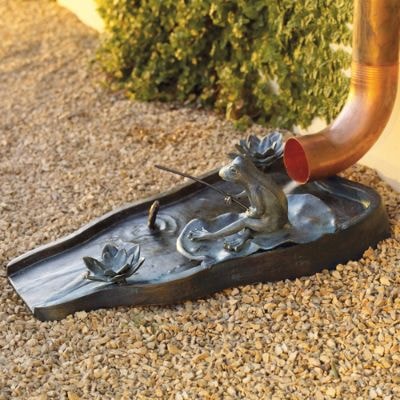
Above ground extensions are the quickest, easiest and most common. They normally come in the form of concrete splash blocks, corrugated extensions, and landscaping channels. Some people opt to attach them to a cistern/garden hose setup to utilize the water–please check your local laws before attempting.
If you’re in a home with exceptional grading and little groundwater issues, these options will be more than adequate. But most of us aren’t. And as tempting as it would be to just slip a corrugated downspout extension on and forget it, we can’t. So our best permanent solution is to extend downspouts underground.
Downspout Extension Underground
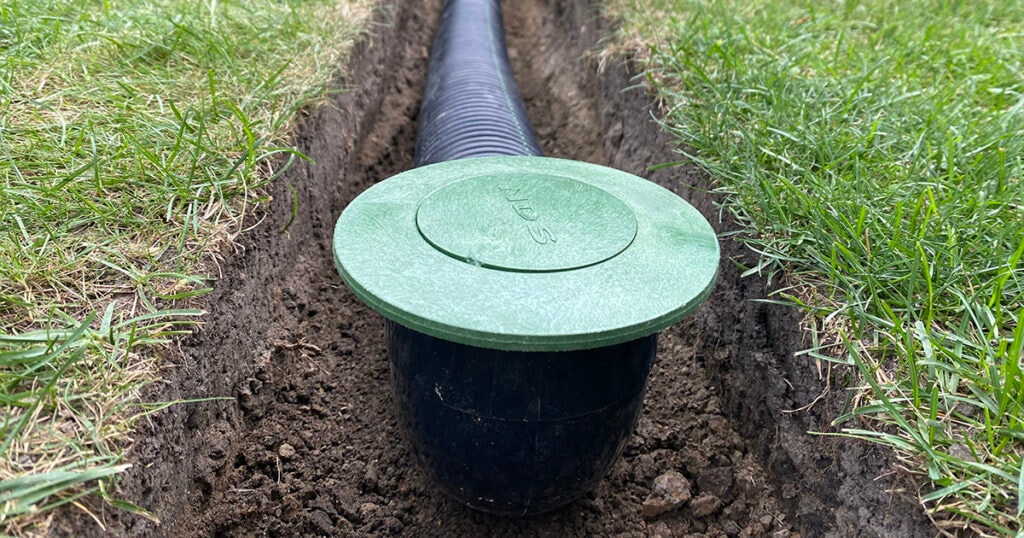
Downspout extensions installed underground are very common. They prevent foundation shifting. And they preserve your landscaping. It seems like a no-brainer. But it also seems like a lot of work. Well, it is. But it doesn’t have to be intimidating. And thanks to the local rental store and home stores it can be done in a weekend. Since that is the real focus of this article I’ll get to it.
Installing Underground Gutter Downspout Extensions
Being a plumber I have my preferences regarding underground downspout extensions. I’ve come across a lot of homes that have had flexible corrugated pipe that’s crushed or clogged. I’m not going to get into a debate with builders or landscapers. I’m just going to tell you how I installed mine.
Best Pipe to use for Underground Downspout Extensions
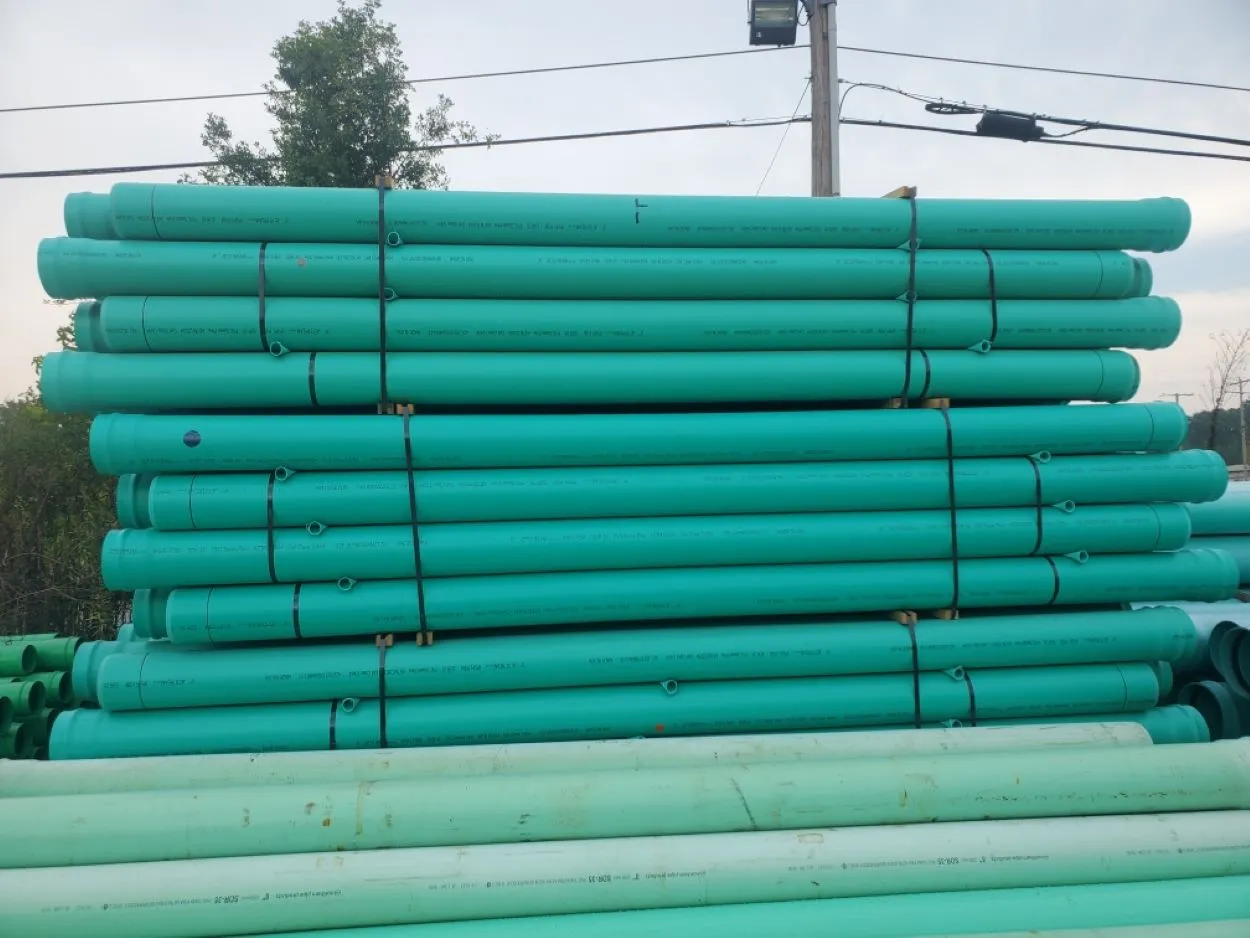
I installed an inexpensive rigid pipe called SDR 35 sewer pipe. I got 4 inch SDR 35 in 10 foot pipe lengths in the Lowes plumbing department. It comes with couplings on one end without rubber inner rings. This allows you to quickly glue it together. And it saves on the cost of couplings. And since it’s rigid it’s much less likely to crush. And there are no holes in it. So there’s no dirt or tree root infiltration.
Pipe Fittings and Transition Fittings
Since these aren’t the usual PVC pipes, you have to be sure to get the correct fittings. Regular pvc pipe has a different outside dimension and the fittings won’t work. Get pipe fittings and gutter transition fittings for sdr 35 pipe only. That includes elbows, wyes and tees. You can just ask the folks at the store.
Drainage Pipe PVC Glue and Primer
I use PVC glue and primer all the time. This is easy stuff. Get regular clear PVC primer and glue. The other stuff is messy and unnecessary in this case.
Despite what you’ve heard you should primer and glue all your fittings and pipe before attaching them. The ground shifts and moves the pipes. And you don’t want trees finding that water. They’ll create a drain clog.
How Deep to Bury the Drain Pipe Downspout Extensions
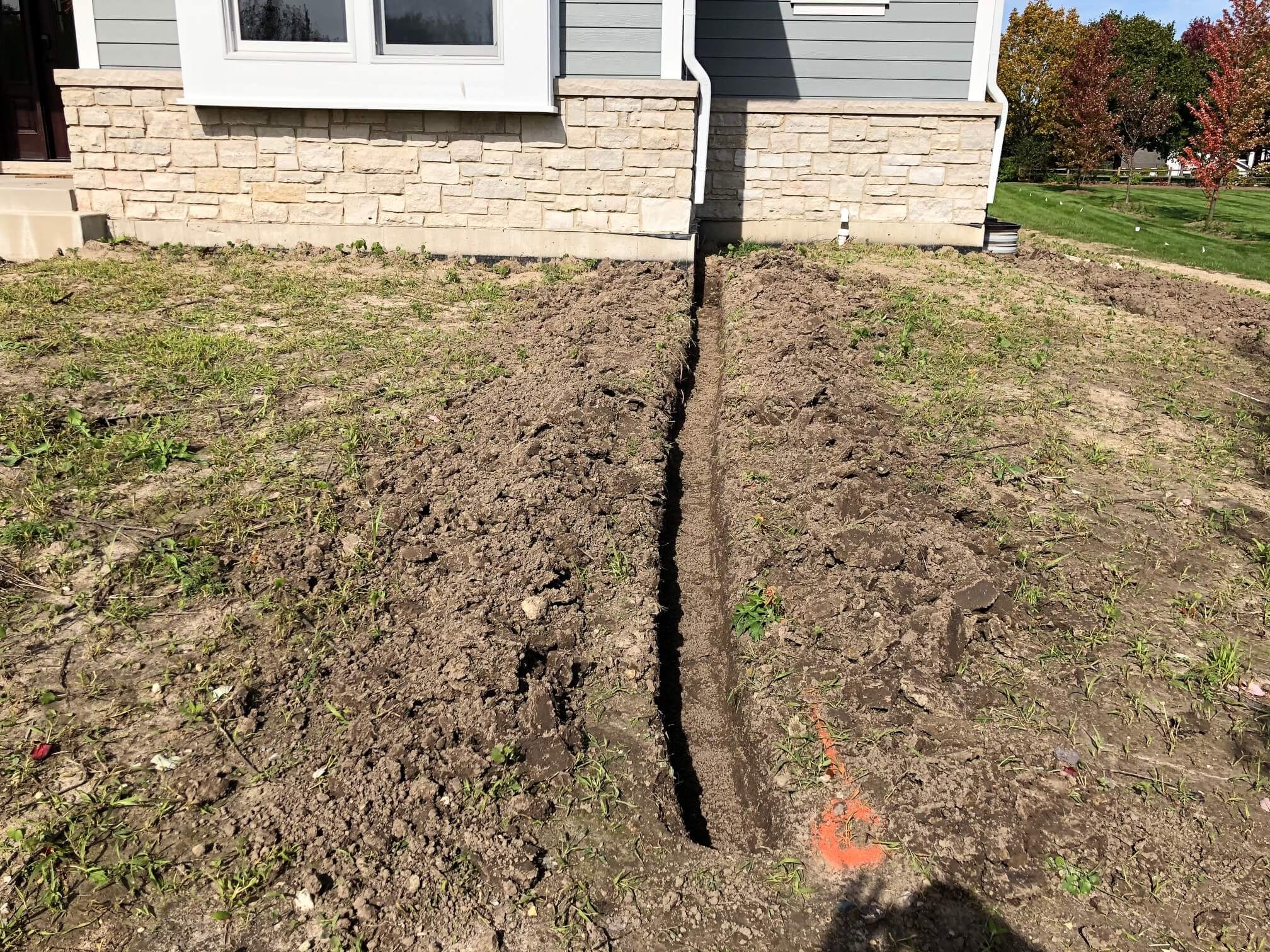
Your trench should be about 10 to 12 inches at the start. This will allow for the 4 inch drain pipe to be fully buried with a 6 inch cover of dirt for your grass. I just rented a trenching machine from my local tool rental store. And yes it’s fun!
Assuming your yard grades away from your home, you can keep your trench at the same depth. But if you have high or flat spots in your yard you’ll need to go a little deeper as you go. Not much.
You want an inch or two of grading from one end to the other of each ten foot length of pipe. It’s just water.
So don’t worry about the usual quarter inch per foot plumbing standard for plumbing drains. There shouldn’t be any solids or chemicals going through this pipe.
Underground Downspout Extension Drain Pipe Terminations
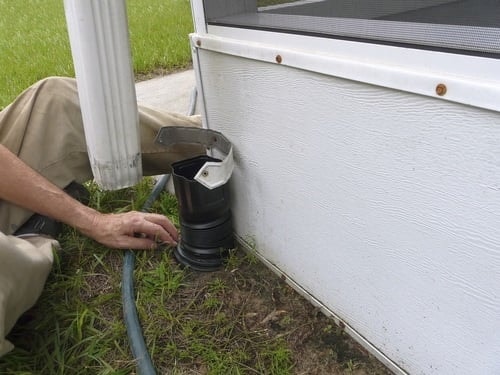
I’m in a part of the country that gets cold winters. So I have to be aware of how much water is left in my drain pipes if they’re not under the frost line. In this part of the country that’s at least 3 feet.
So since I’m not going that deep I have to be sure that the pipe is dry as often as possible to prevent ice plugs. I also don’t relish the idea of breeding mosquitoes in the summer.
So at the ends of each termination point of my underground downspout extensions I dug the holes an additional 2 feet square and a total of 2 feet deep. I put a tee connection on the ends and filled the extra dug out portion with gravel.
So if you can visualize this, when the pipes are draining they’ll fill up that dug out end and then bubble out the top of the tee.
When it stops raining the water should eventually drain into the ground. This avoids standing water at the ends. I also put pop up style drainage connections on top of the tees to prevent mosquitoes. Most landscapers put elbows. This encourages standing water.
Connecting a Sump Pump to an Underground Downspout Extension
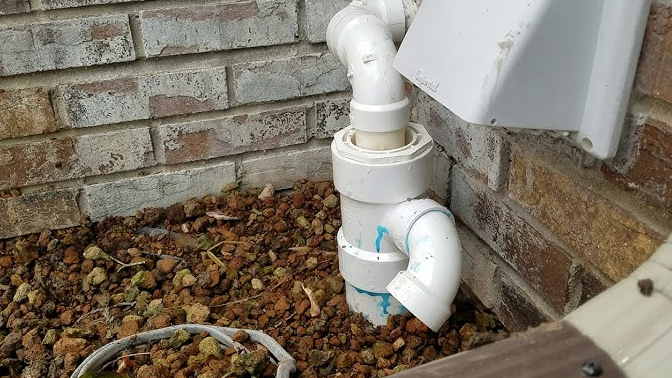
If you have groundwater around your home you probably already have a sump pump. You’re going to want to make that ugly discharge pipe sitting on your lawn disappear. I ran mine into the downspout piping before it went underground.
The special adapter I added was a rubber coupling on the sump pump discharge before it attached to the downspouts. I wanted the option of replacing or repairing the pipe due to my home or the downspout extension drain pipes settling over the years.
I also put a grid strainer type of termination on top of the tee at the end to avoid the popup being blown off. I did have to silicone it on later. It even got blown off by the sump pump water. But be careful if you have trees around your home.
If leaves get into your gutters they may plug the strainer connections. You may want to stick with the popups. And remember, you don’t have to tie all the drains together.
I have 4 different downspout terminations in my yard. I put pop up terminations on all except this drain.
How to Pipe the Downspout Extensions
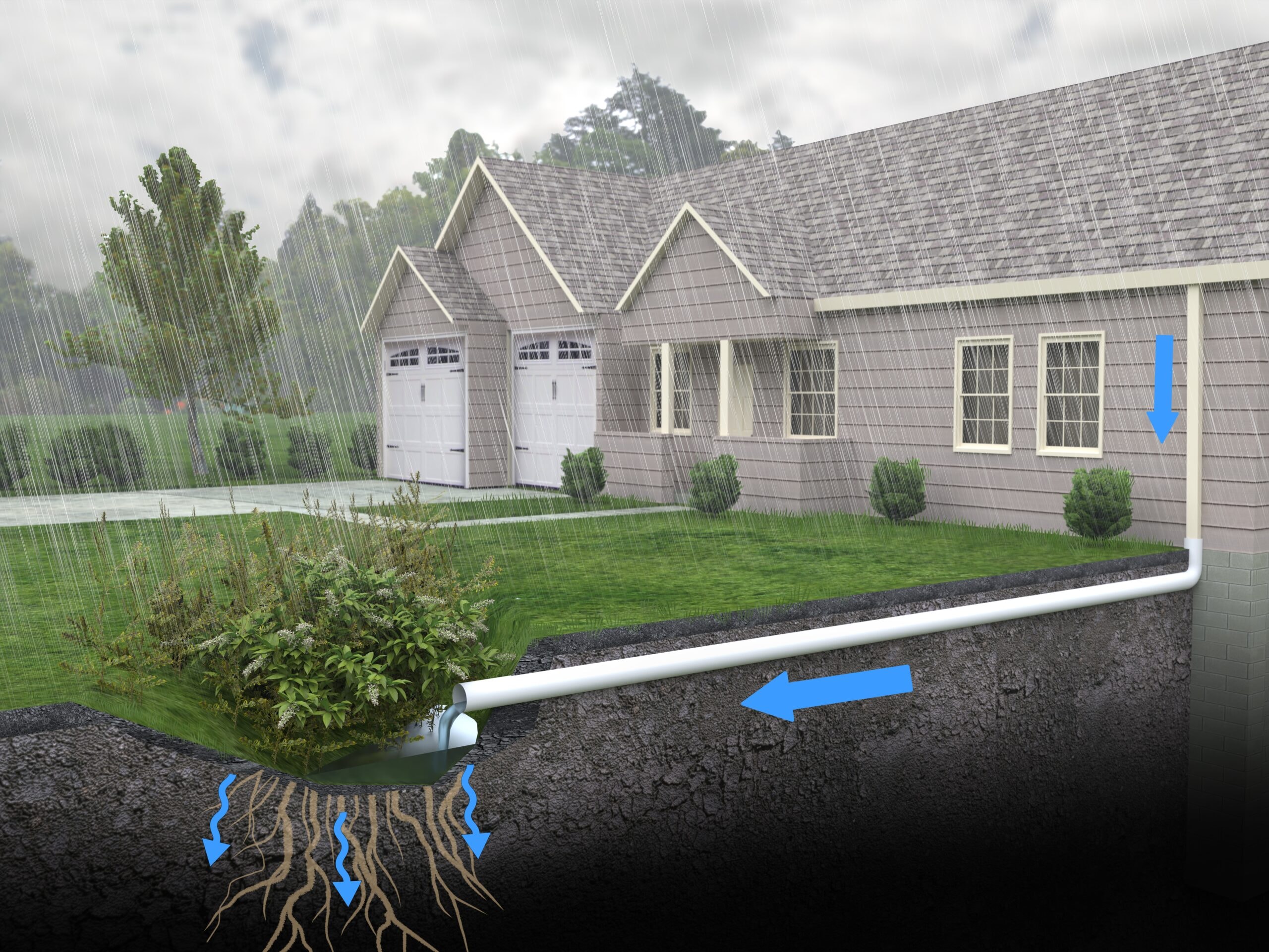
Gutter downspouts come in a couple of different sizes for most homes. You’ll want to measure the dimensions of your gutter to find a SDR 35 transition fitting that will fit over your gutter ends.
The 90 degree elbows that change direction from vertical to horizontal can be standard radius turns. Since this is just rain water, tees will work fine if you’re attaching drains together underground.
The internet is full of pictures of how to run the underground drain pipes. Since this is just rain water without any solids or chemicals you have a lot of latitude with what drain fittings to use. It doesn’t have to be perfect.
Backfilling the Downspout Extension Trench
When backfilling the trench don’t just throw dirt back in and compact it. It’s very important that you get gravel and fill the trench half way up the sides of the pipe. Some people prefer sand. Then take a two foot level and walk the full length of the pipe and check for consistent downward grade.
When a city inspector walks the full length of the underground drain or sewers they literally walk on top of them. This tells them how it will settle and if it stills has the proper grading when backfilled. If you find it going the wrong way just lift up on it a little and push gravel or sand under it.
When you finish backfilling with dirt you’ll want to be sure to pack the dirt in tight to prevent further settling in your yard.
Landscapers Install Underground Downspout Drains
I’m writing this article for those of you that want to do this yourself. I’m not trying to imply that Advocate Master Plumbing installs downspout extensions.
This is a simple, labor intensive job. If you get stuck or decide you want someone else to do it, call a landscaper. You don’t want to pay plumbers to dig. For any other home plumbing repairs or installations, we can help.
If you find that you need ethical local Venice plumbers call us. We’ll unclog your drains, faucet repairs, replace your water heater or sump pump and do all other manner of residential plumbing repair and installations.

